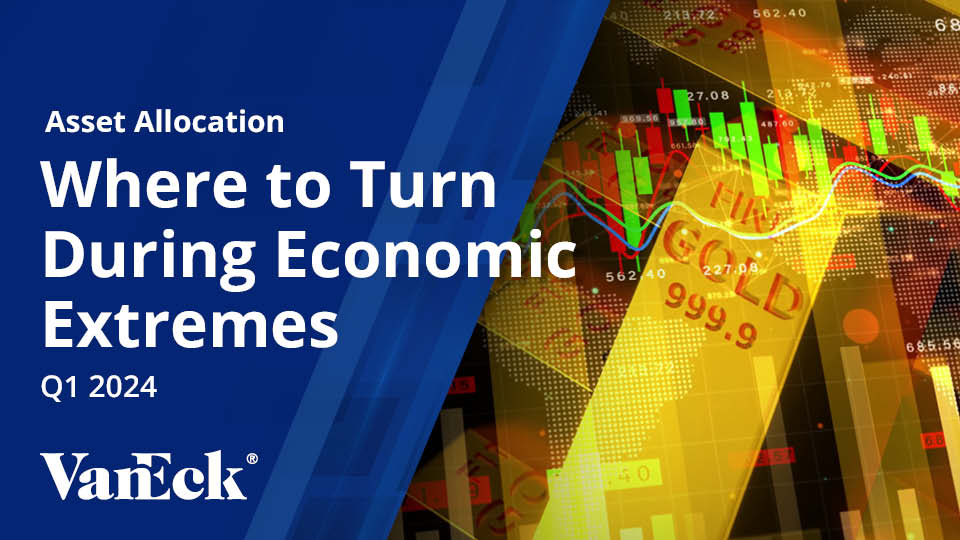Fed’s Gambit: Inflation-Fighting to Recession-Fighting?
January 13, 2023
Read Time 4 MIN
Happy New Year! Welcome to our first missive of 2023. Generally, we try to keep our updates upbeat and optimistic. Yet, investors have recently found our outlook sobering when tasked with reporting the facts. I picked up the monikers “Dark Dave” and “Doomsday Dave” after warning investors about the risks of high inflation over the past two years. These nicknames always deliver on giving my colleagues a good laugh and acknowledging this publicly is sure to make them stick!
Not out of the woods just yet
Inflation is finally falling. That is great news. If the peak level of inflation we experienced in 2022 continued, our money would be worth nearly 50% less in five years! This highlights how disruptive inflation is and why investors must protect themselves. We have been warning that stocks and bonds alone will not get the job done during a period of high inflation. Since high inflation has materialized, the negative performance of stocks and bonds and the positive performance of real assets drives this point home.
Risk assets may continue to rally as inflation softens. However, over the medium-term, investors should brace for potential stagflation. There is significant likelihood of a recession in the third or fourth quarter of this year triggered by both restrictive monetary policy and elevated inflation. Inflation is expected to remain significantly above 2% for an extended period of time (think years, not months). The lessons from other high inflationary periods teach us that we are likely to be in an extended period of above-target inflation with several peaks and troughs.
Stop signs at every corner
Higher interest rates, by design, are intended to curb economic activity. Not all rate hiking cycles have ended in recessions, but many have. This is especially true during periods of high inflation. The Fed funds rate is at 4.33%, and the Fed is signaling that interest rates of 5% may be “sufficiently restrictive” to fight inflation.
Fed Fund Peak vs. U.S. Recessions – 1954 to 2022
Source: St. Louis Federal Reserve Bank, VanEck. Data as of December 2022. Past performance is not indicative of future results.
Another way to look at this is through the lens of unemployment. On average, recessions occurred five months after the low in unemployment. The current unemployment rate is at a near-term low of 3.5%. Based on the slowdown in corporate earnings and increasing layoff announcements by major corporations, it appears likely to be heading higher.
Unemployment Rate vs. U.S. Recessions – 1954 to 2022
Source: St. Louis Federal Reserve Bank, VanEck. Data as of December 2022. Past performance is not indicative of future results.
Recessions are a clear negative for most equities. Stock market bottoms occurred, on average, eight months after the start of past recessions.
S&P 500 vs. U.S. Recessions – 1954 to 2022
Source: St. Louis Federal Reserve Bank, VanEck. Data as of December 2022. Past performance is not indicative of future results.
A recession should temporarily ease inflation. However, inflation will likely rebound once the Fed pivots from inflation-fighting mode to recession-fighting mode because the structural inflationary forces are expected to take an extended period of time to resolve.
Approaching things from every direction
The economic regime that we have outlined is ideal for investments that can generate real positive returns by benefiting from supply and demand imbalances (commodities and natural resource equities), maintaining profit margins (natural resource equities, infrastructure, and other real assets), and generating a yield in excess of the inflation rate (high yield debt and equities).
VanEck has many offerings that provide these exposures. We continue to encourage investors to consider the VanEck Inflation Allocation ETF (RAAX) and the VanEck Dynamic High Income ETF (INC).
We recently launched the VanEck Commodity Strategy ETF (PIT). The ticker PIT is a nod to commodity trading pits of the past, where floor brokers would trade different commodities. This active ETF is designed to outperform by allocating more heavily to the commodities with the most favorable risk and return profiles while simultaneously seeking to benefit from the roll yield or mispricing of individual commodity curves.
We launched this fund based on our view that we are in the early stages of a commodity super cycle, resulting from years of underinvestment in production. The chart below demonstrates that commodities typically experience extended bull and bear markets known as “super cycles.” On average, these super cycles last 17 years for bull markets and 20 years for bear markets.
Commodity Super Cycles – 1800 to 2022
Source: National Bureau of Economic Research (NBER), Bureau of Labor Statistics (BLS), St. Louis Federal Reserve Bank (FRED), Commodity Research Bureau (CRB), Bloomberg, S&P Global. Data as of December 2022. Past performance is not indicative of future results.
We appreciate the read! Our promise to you is to continue to report the data as we see it and then use that information to find investments that we believe are well-positioned to thrive in the current environment.
To receive more Asset Allocation insights, sign up in our subscription center.
Related Topics
Related Insights
February 28, 2024
February 22, 2024
December 19, 2023
Important Disclosures
This is not an offer to buy or sell, or a solicitation of any offer to buy or sell any of the securities mentioned herein. The information presented does not involve the rendering of personalized investment, financial, legal, or tax advice. Certain statements contained herein may constitute projections, forecasts and other forward looking statements, which do not reflect actual results. Information provided by third–party sources are believed to be reliable and have not been independently verified for accuracy or completeness and cannot be guaranteed. Any opinions, projections, forecasts, and forward–looking statements presented herein are valid as of the date of this communication and are subject to change without notice. The information herein represents the opinion of the author(s), but not necessarily those of VanEck.
Bloomberg U.S. Mortgage Backed Securities (MBS) Index tracks fixed-rate agency mortgage backed pass-through securities guaranteed by Ginnie Mae (GNMA), Fannie Mae (FNMA), and Freddie Mac (FHLMC). The index is constructed by grouping individual TBA-deliverable MBS pools into aggregates or generics based on program, coupon and vintage. Bloomberg U.S. Corporate High Yield Bond Index measures the USD-denominated, high yield, fixed-rate corporate bond market. Securities are classified as high yield if the middle rating of Moody's, Fitch and S&P is Ba1/BB+/BB+ or below. Bonds from issuers with an emerging markets country of risk, based on Bloomberg EM country definition, are excluded. J.P. Morgan EMBI Global Diversified Index is an unmanaged, market-capitalization weighted, total-return index tracking the traded market for U.S.-dollar-denominated Brady bonds, Eurobonds, traded loans, and local market debt instruments issued by sovereign and quasi-sovereign entities. Alerian MLP Index is the leading gauge of energy infrastructure Master Limited Partnerships (MLPs). It is a capped, float-adjusted, capitalization-weighted index, whose constituents earn the majority of their cash flow from midstream activities involving energy commodities. Consumer Price Index is an index of the variation in prices paid by typical consumers for retail goods and other items. Bloomberg Commodity Index is a broadly diversified index that tracks the commodity markets through commodity futures contracts and is made up of exchange–traded futures on physical commodities, which are weighted to account for economic significance and market liquidity. S&P 500 Index is widely regarded as the best single gauge of large–cap U.S. equities. The index is a float–adjusted, market–cap–weighted index of 500 leading U.S. companies from across all market sectors including information technology, telecommunications services, utilities, energy, materials, industrials, real estate, financials, health care, consumer discretionary, and consumer staples.
Benchmark index returns are not Fund returns and do not reflect any management fees or brokerage expenses. Certain indices may take into account withholding taxes. Investors cannot invest directly in the Index. Returns for actual Fund investors may differ from what is shown because of differences in timing, the amount invested and fees and expenses. Index returns assume that dividends have been reinvested.
The S&P 500 Index is a product of S&P Dow Jones Indices LLC and/or its affiliates and has been licensed for use by Van Eck Associates Corporation. Copyright © 2023 S&P Dow Jones Indices LLC, a division of S&P Global, Inc., and/or its affiliates. All rights reserved. Redistribution or reproduction in whole or in part are prohibited without written permission of S&P Dow Jones Indices LLC. For more information on any of S&P Dow Jones Indices LLC’s indices please visit www.spglobal.com/spdji/en/. S&P® is a registered trademark of S&P Global and Dow Jones® is a registered trademark of Dow Jones Trademark Holdings LLC. Neither S&P Dow Jones Indices LLC, Dow Jones Trademark Holdings LLC, their affiliates nor their third party licensors make any representation or warranty, express or implied, as to the ability of any index to accurately represent the asset class or market sector that it purports to represent and neither S&P Dow Jones Indices LLC, Dow Jones Trademark Holdings LLC, their affiliates nor their third party licensors shall have any liability for any errors, omissions, or interruptions of any index or the data included therein.
VanEck Inflation Allocation ETF (RAAX): An investment in the fund may be subject to risks which include, among others, in fund of funds risk which may subject the Fund to investing in commodities, gold, natural resources companies, MLPs, real estate sector, infrastructure, equities securities, small–and medium–capitalization companies, foreign securities, emerging market issuers, foreign currency, credit, interest rate, call and concentration risks, derivatives, cryptocurrency, cryptocurrency tax, all of which may adversely affect the Fund. The Fund may also be subject to affiliated fund, U.S. Treasury Bills, subsidiary investment, commodity regulatory (with respect to investments in the Subsidiary), tax (with respect to investments in the Subsidiary), risks of ETPs, liquidity, gap, cash transactions, high portfolio turnover, model and data, management, operational, authorized participant concentration, no guarantee of active trading market, trading issues, market, fund shares trading, premium/discount and liquidity of fund shares, and non–diversified risks. Foreign investments are subject to risks, which include changes in economic and political conditions, foreign currency fluctuations, changes in foreign regulations, and changes in currency exchange rates which may negatively impact the Fund's returns. Small–and medium–capitalization companies may be subject to elevated risks.
VanEck Commodity Strategy ETF (PIT): An investment in the fund may be subject to risks which include, among others, commodities and commodity-linked instruments and tax, futures contract, U.S. Treasury Bills, subsidiary investment, commodity regulatory, subsidiary tax, gap, cash transactions, liquidity, high portfolio turnover, active management, credit, interest rate, derivatives, counterparty, pooled investment vehicle, repurchase agreements, regulatory, affiliated fund, market, operational, authorized participant concentration, new fund, absence of prior active market, trading issues, fund shares trading, premium/discount, liquidity of fund shares, non-diversified, concentration, municipal securities, money market funds, securitized/asset-backed securities, and sovereign bond risks, all of which may adversely affect the Fund.
VanEck Dynamic High Income ETF (INC): An investment in the fund may be subject to risks which include, among others, fund of funds, ETPs, U.S. treasury securities, interest rate, income, high portfolio turnover, management, operational, authorized participant concentration, absence of prior active market, trading issues, market, fund shares trading, premium/discount, liquidity of fund shares, affiliated fund, new fund, and non-diversified risks. The Fund may also be subject to dividend paying securities, investing in foreign securities, investing in emerging market issuers, foreign currency, investing in mortgage REITs, preferred securities, CLO, credit, high yield securities, interest rate, call and concentration risks, all of which may adversely affect the Fund.
Investing involves substantial risk and high volatility, including possible loss of principal. An investor should consider the investment objective, risks, charges and expenses of the Fund carefully before investing. To obtain a prospectus and summary prospectus, which contains this and other information, call 800.826.2333 or visit vaneck.com. Please read the prospectus and summary prospectus carefully before investing.
©️ Van Eck Securities Corporation, Distributor, a wholly owned subsidiary of Van Eck Associates Corporation.
Related Funds
Important Disclosures
This is not an offer to buy or sell, or a solicitation of any offer to buy or sell any of the securities mentioned herein. The information presented does not involve the rendering of personalized investment, financial, legal, or tax advice. Certain statements contained herein may constitute projections, forecasts and other forward looking statements, which do not reflect actual results. Information provided by third–party sources are believed to be reliable and have not been independently verified for accuracy or completeness and cannot be guaranteed. Any opinions, projections, forecasts, and forward–looking statements presented herein are valid as of the date of this communication and are subject to change without notice. The information herein represents the opinion of the author(s), but not necessarily those of VanEck.
Bloomberg U.S. Mortgage Backed Securities (MBS) Index tracks fixed-rate agency mortgage backed pass-through securities guaranteed by Ginnie Mae (GNMA), Fannie Mae (FNMA), and Freddie Mac (FHLMC). The index is constructed by grouping individual TBA-deliverable MBS pools into aggregates or generics based on program, coupon and vintage. Bloomberg U.S. Corporate High Yield Bond Index measures the USD-denominated, high yield, fixed-rate corporate bond market. Securities are classified as high yield if the middle rating of Moody's, Fitch and S&P is Ba1/BB+/BB+ or below. Bonds from issuers with an emerging markets country of risk, based on Bloomberg EM country definition, are excluded. J.P. Morgan EMBI Global Diversified Index is an unmanaged, market-capitalization weighted, total-return index tracking the traded market for U.S.-dollar-denominated Brady bonds, Eurobonds, traded loans, and local market debt instruments issued by sovereign and quasi-sovereign entities. Alerian MLP Index is the leading gauge of energy infrastructure Master Limited Partnerships (MLPs). It is a capped, float-adjusted, capitalization-weighted index, whose constituents earn the majority of their cash flow from midstream activities involving energy commodities. Consumer Price Index is an index of the variation in prices paid by typical consumers for retail goods and other items. Bloomberg Commodity Index is a broadly diversified index that tracks the commodity markets through commodity futures contracts and is made up of exchange–traded futures on physical commodities, which are weighted to account for economic significance and market liquidity. S&P 500 Index is widely regarded as the best single gauge of large–cap U.S. equities. The index is a float–adjusted, market–cap–weighted index of 500 leading U.S. companies from across all market sectors including information technology, telecommunications services, utilities, energy, materials, industrials, real estate, financials, health care, consumer discretionary, and consumer staples.
Benchmark index returns are not Fund returns and do not reflect any management fees or brokerage expenses. Certain indices may take into account withholding taxes. Investors cannot invest directly in the Index. Returns for actual Fund investors may differ from what is shown because of differences in timing, the amount invested and fees and expenses. Index returns assume that dividends have been reinvested.
The S&P 500 Index is a product of S&P Dow Jones Indices LLC and/or its affiliates and has been licensed for use by Van Eck Associates Corporation. Copyright © 2023 S&P Dow Jones Indices LLC, a division of S&P Global, Inc., and/or its affiliates. All rights reserved. Redistribution or reproduction in whole or in part are prohibited without written permission of S&P Dow Jones Indices LLC. For more information on any of S&P Dow Jones Indices LLC’s indices please visit www.spglobal.com/spdji/en/. S&P® is a registered trademark of S&P Global and Dow Jones® is a registered trademark of Dow Jones Trademark Holdings LLC. Neither S&P Dow Jones Indices LLC, Dow Jones Trademark Holdings LLC, their affiliates nor their third party licensors make any representation or warranty, express or implied, as to the ability of any index to accurately represent the asset class or market sector that it purports to represent and neither S&P Dow Jones Indices LLC, Dow Jones Trademark Holdings LLC, their affiliates nor their third party licensors shall have any liability for any errors, omissions, or interruptions of any index or the data included therein.
VanEck Inflation Allocation ETF (RAAX): An investment in the fund may be subject to risks which include, among others, in fund of funds risk which may subject the Fund to investing in commodities, gold, natural resources companies, MLPs, real estate sector, infrastructure, equities securities, small–and medium–capitalization companies, foreign securities, emerging market issuers, foreign currency, credit, interest rate, call and concentration risks, derivatives, cryptocurrency, cryptocurrency tax, all of which may adversely affect the Fund. The Fund may also be subject to affiliated fund, U.S. Treasury Bills, subsidiary investment, commodity regulatory (with respect to investments in the Subsidiary), tax (with respect to investments in the Subsidiary), risks of ETPs, liquidity, gap, cash transactions, high portfolio turnover, model and data, management, operational, authorized participant concentration, no guarantee of active trading market, trading issues, market, fund shares trading, premium/discount and liquidity of fund shares, and non–diversified risks. Foreign investments are subject to risks, which include changes in economic and political conditions, foreign currency fluctuations, changes in foreign regulations, and changes in currency exchange rates which may negatively impact the Fund's returns. Small–and medium–capitalization companies may be subject to elevated risks.
VanEck Commodity Strategy ETF (PIT): An investment in the fund may be subject to risks which include, among others, commodities and commodity-linked instruments and tax, futures contract, U.S. Treasury Bills, subsidiary investment, commodity regulatory, subsidiary tax, gap, cash transactions, liquidity, high portfolio turnover, active management, credit, interest rate, derivatives, counterparty, pooled investment vehicle, repurchase agreements, regulatory, affiliated fund, market, operational, authorized participant concentration, new fund, absence of prior active market, trading issues, fund shares trading, premium/discount, liquidity of fund shares, non-diversified, concentration, municipal securities, money market funds, securitized/asset-backed securities, and sovereign bond risks, all of which may adversely affect the Fund.
VanEck Dynamic High Income ETF (INC): An investment in the fund may be subject to risks which include, among others, fund of funds, ETPs, U.S. treasury securities, interest rate, income, high portfolio turnover, management, operational, authorized participant concentration, absence of prior active market, trading issues, market, fund shares trading, premium/discount, liquidity of fund shares, affiliated fund, new fund, and non-diversified risks. The Fund may also be subject to dividend paying securities, investing in foreign securities, investing in emerging market issuers, foreign currency, investing in mortgage REITs, preferred securities, CLO, credit, high yield securities, interest rate, call and concentration risks, all of which may adversely affect the Fund.
Investing involves substantial risk and high volatility, including possible loss of principal. An investor should consider the investment objective, risks, charges and expenses of the Fund carefully before investing. To obtain a prospectus and summary prospectus, which contains this and other information, call 800.826.2333 or visit vaneck.com. Please read the prospectus and summary prospectus carefully before investing.
©️ Van Eck Securities Corporation, Distributor, a wholly owned subsidiary of Van Eck Associates Corporation.



